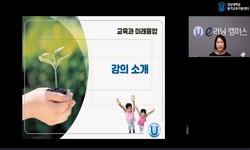Purpose: This paper provides basic clinical data on the treatment of scoliosis patients by analyzing the effects of the type and position of scoliosis on the static balance using Tetrax on adolescents who have balance disorders as a consequence of str...
http://chineseinput.net/에서 pinyin(병음)방식으로 중국어를 변환할 수 있습니다.
변환된 중국어를 복사하여 사용하시면 됩니다.
- 中文 을 입력하시려면 zhongwen을 입력하시고 space를누르시면됩니다.
- 北京 을 입력하시려면 beijing을 입력하시고 space를 누르시면 됩니다.
https://www.riss.kr/link?id=A103845305
- 저자
- 발행기관
- 학술지명
- 권호사항
-
발행연도
2017
-
작성언어
Korean
- 주제어
-
등재정보
KCI등재
-
자료형태
학술저널
- 발행기관 URL
-
수록면
287-291(5쪽)
- 제공처
-
0
상세조회 -
0
다운로드
부가정보
다국어 초록 (Multilingual Abstract)
Purpose: This paper provides basic clinical data on the treatment of scoliosis patients by analyzing the effects of the type and position of scoliosis on the static balance using Tetrax on adolescents who have balance disorders as a consequence of structural changes, such as scoliosis. Methods: A total of 110 adolescents were divided into 6 groups according to the radiographs and 60 adolescents were sampled, 10 each for each group. The static balance was measured and analyzed on the existence of sight using Tetrax. Results: The changes followed by existence of sight in static balance group showed a significant difference statistically in Stability index in all groups (p<0.001). The changes in the static balance in each group in terms of the stability index were significant in all groups, where the experiments were performed under the eyes opened and eyes-closed condition (p<0.01)(p<0.001). The post-hoc comparison revealed the stability index to be the highest in the eyes-opened condition in group III, but not in group IV. In the eyes-closed condition, group III showed the highest stability index of all the groups. Conclusion: Adolescents with lumbar scoliosis had a lower static balance in single scoliosis with the eyes-closed condition or had little movement compensation. In addition, unlike the other normal scoliosis, back scoliosis has negative effects on the posture because it causes an increase in the disturbance of posture. Therefore, future studied will be needed to examine the imbalance of posture in people suffering from back pain.
동일학술지(권/호) 다른 논문
-
- 대한물리치료학회
- Yang, Sung Rae
- 2017
- KCI등재
-
Status of Occupational Therapists on Unilateral Neglect Test Tools Usage and Symptom Classification
- 대한물리치료학회
- Jang, Woo-Hyuk
- 2017
- KCI등재
-
- 대한물리치료학회
- Kim, Chi-Hwan
- 2017
- KCI등재
-
- 대한물리치료학회
- Kang, Dong-Yeon
- 2017
- KCI등재






 ScienceON
ScienceON





